This spring and summer several plants native to California much to my delight. A couple were known, but have just been correctly identified. All will be added to my list of Existing native Plants, a list of those here before we. It’s a fascinating, educational journey to form this list and very enjoyable.
Bush Beardtongue, Keckiella breviflora
There is a colony of this CA native penstemon like bush growing behind the mailboxes at the top of the street. it needed to bloom before it could be identified, but looked so much like penstemon that it wasn’t too hard to find. Also called Yawning Penstemon, the flowers are small, one half inch and slender, white or very pale pink with thin pink or purple lines running down them. The entire group is three feet by fifteen feet, has no water and good drainage on a slope. I’d like to try propagating this or transplanting it down closer.
California larkspur, Delphinium californicum
This tall meadow flower is a perennial that is native to California and is endemic (limited) to California alone. It was found in a natural dry slope below the goat shed here on our land. About six feet tall, I also had to wait to see what plant this was; the creamy white flowers look very much any other delphinium, but they have a bit of pink in them.
Downy Pincushionplant, Navarretia pubescens
Before it blooms, this low CA native looks like clover when it has already gone to seed. The little ‘pincushions’ at the ends of the short stems each have 10-12 tiny blue star shaped flowers. This is native to California and other states in the West. Luckily, it has no smell, like its unfortunately named relative the skunkweed, Navarretia squarrosa.
Four Spot, Clarkia purpurea ssp. Quadrivulnera
This tall slender Clarkia, grows throughout the foothills around Oakhurst, North Fork and Auberry in the CA foothills and is called ‘Farewell to Spring’ locally. The delicate lavender cups each have a darker spot giving it its name.
Indian Rice Grass, Achnatherum hymenoides
The sage-colored, wiry foliage and incredibly fine ivory-colored seed heads give the grass an overall light, airy appearance that floats over the surface of the ground. This grass is native to a large portion of the US from the Mid-west to the western Coast of California.
Chaparral Honeysuckle , Lonicera interrupta
A while ago, I found this viney thing I previously thought was poison oak
climbing up through the trees. Since starting the blog and trying to ID all the native plants here, I thought it was time to find the name of this one. Searching for vines in my county on Calflora, it was found to be a native honeysuckle, but I needed to again wait for the bloom to make sure.
Chaparral honeysuckle is a round leaved, opposing leaved native vine with a delicate grey-green color. The leaves are the size of pennies or quarters. It grows under the oaks and pines and twines up into them, with a slender grapevine-like trunk that thickens if it’s cut to the ground. It grows bushier if that is done, of course. The fragrant flowers are a buttery yellow.
Mariposa Lily, Calochortus superbus
This Mariposa lily was here when we arrived and pointed out by the neighbors as a real prized bulb. After getting Mark Egger’s name from Katie’s NatureID blog when reading a post on Owl’s clover, an expert in Castillejas and Calochortus, I contacted him and asked if he’d ID my Owl’s clovers and Mariposa lilies, he answered graciously and now I know! And they weren’t what I thought! So I am delighted!
Speckled fairyfans, Clarkia cylindrica subsp. Clavicarpa
This is another clarkia, also called Farewell to Spring in this area, distinctive by its height…almost 3 feet tall with a many branched form. Solid pale lavender-pink blooms about 1 inch wide are speckled with fine dots and have a lighter color on the petals at times. The flowers open and close with the light.
Tomcat clover, Trifolium willdenovii
Since this looks so much like clover, but with extra long (2”) leaves, it was easy to ID this Tomcat clover by looking up Trifolium. There is only a small patch here on the place, but it grows along the roadsides commonly. It would be nice if it takes off here; I like the interesting flower and they are said to attract Buckeyes, orange sulfurs, and anise swallowtails.
Two bad behavers were also found:
Klamath weed, Hypericum perforatum
I thought this was going to be something. I thought it might be a penstemon of some kind, growing tall with buds forming up the slender stalk. When it flowered I looked once, then twice and decided tiny flowers looked a bit like St John’s Wort. Just on chance, I looked up Hypericum in Calflora and sure enough, there it is under the dubious name of Klamath weed. Rats! It’s a non-native weed, so out it will go. Now I notice it along the roadsides, wouldn’t you know…
Napa star thistle, Centaurea melitensis
I first noticed this while at an outdoor event in northern California. I looked down to see why my ankles were being torn to shreds. The star thistle has one of the most vicious set of spines on it that I’ve ever seen.
So this spring while weeding, I misidentified the seedling for this as Elegant Madia and let it live in my meadow. The filaree had all been eradicated which left a nice clean area for the star thistle to sneak up on me.
I waited and watched as it wasn’t acting like Madia as a teenager and when it became a sprout of about twelve inches I became suspicious. This is NOT Madia. When the thistle started to form at the junctures of the branches, I could then look up Centaurea in Calflora and there it was…Star Thistle! I told Tractor Man that it needs to be expunged from our little world here. He’s already a fierce French broom fighter and not all women can say that about their garden helpers.


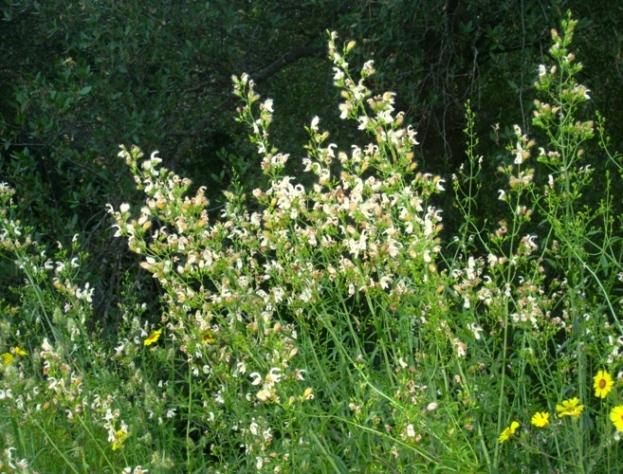
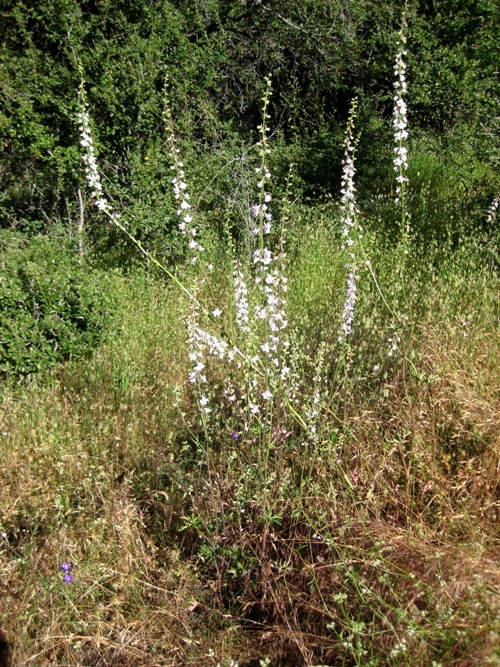
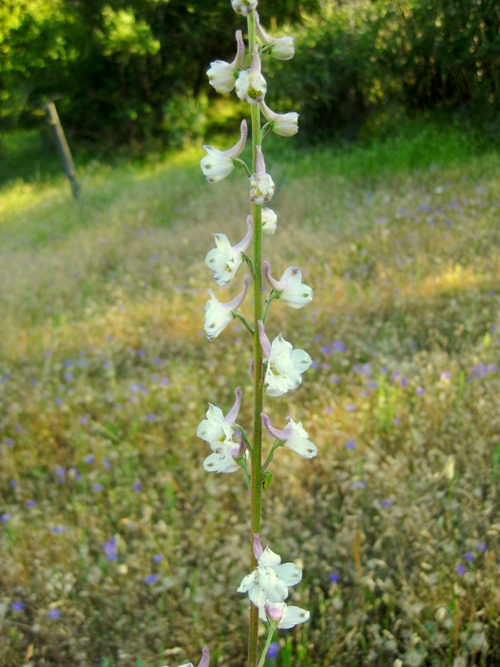
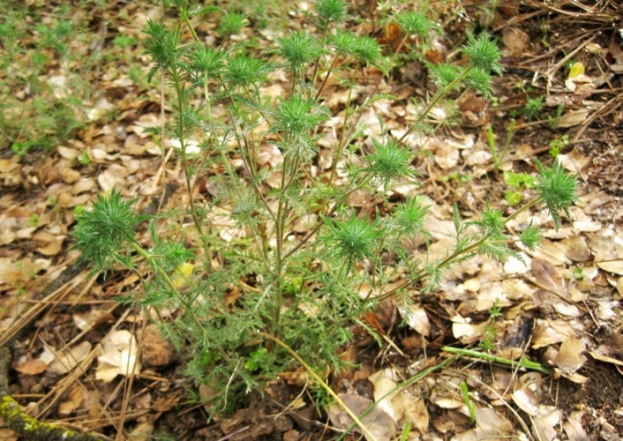
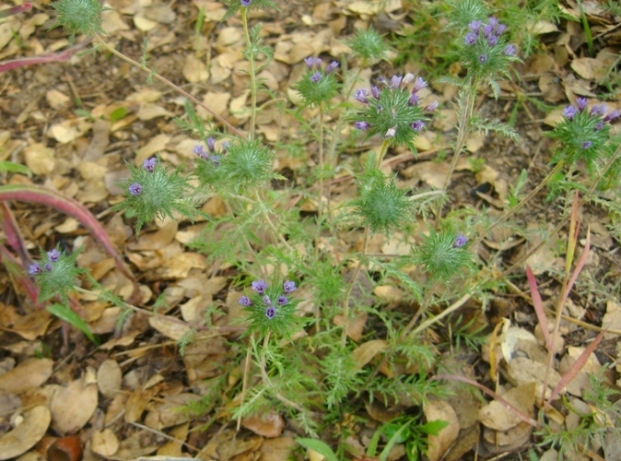
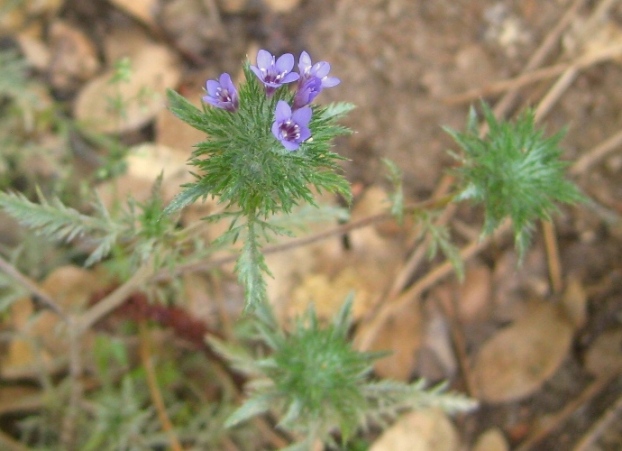
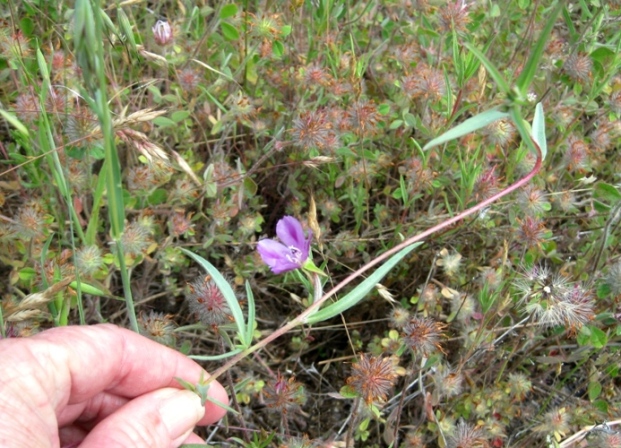
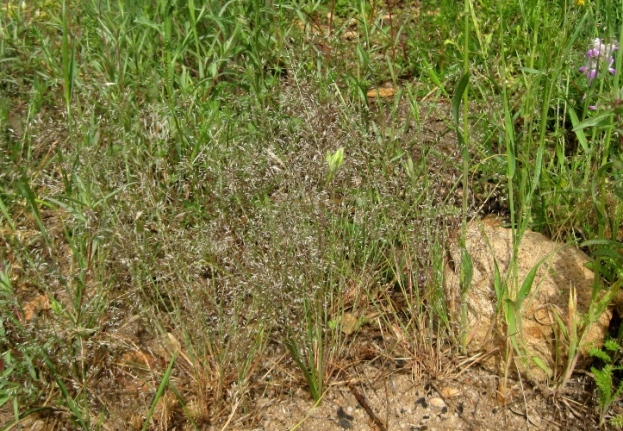
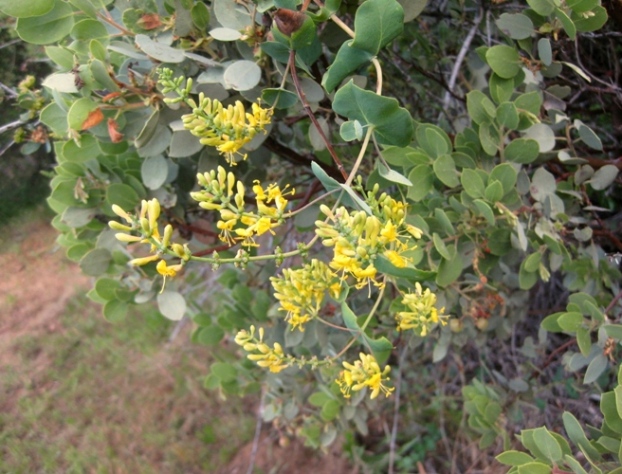
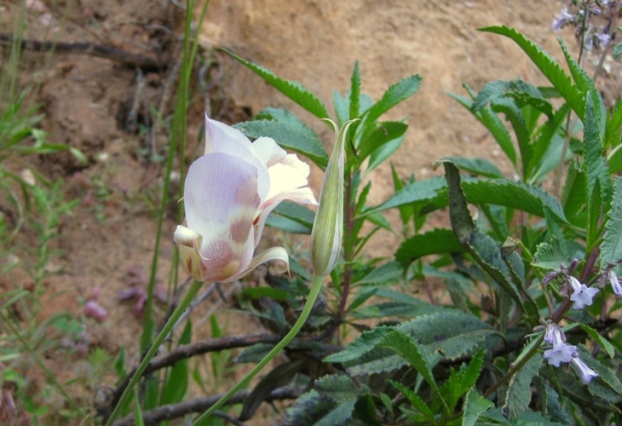
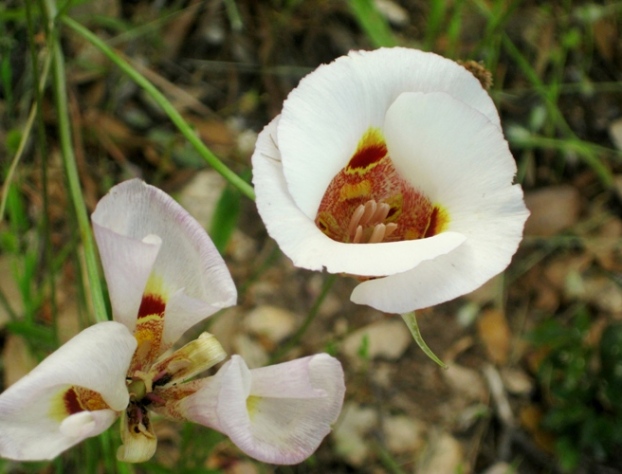
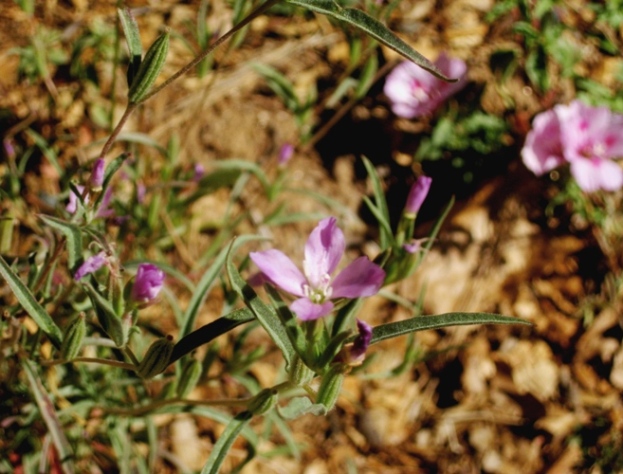



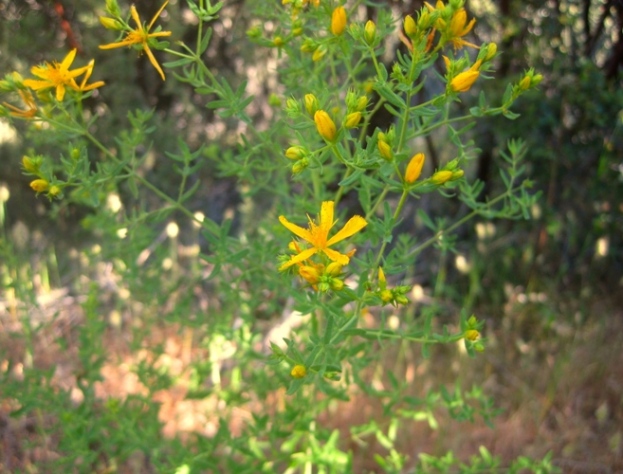
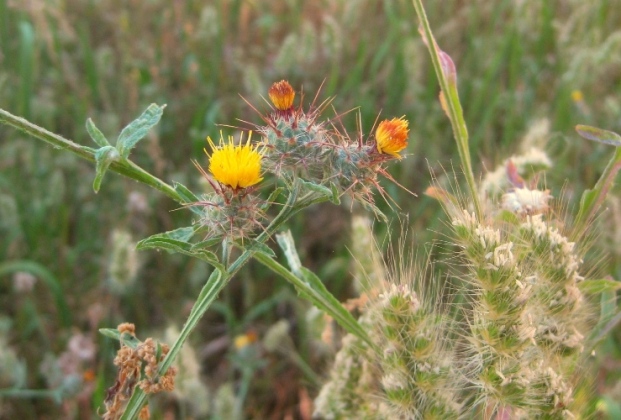
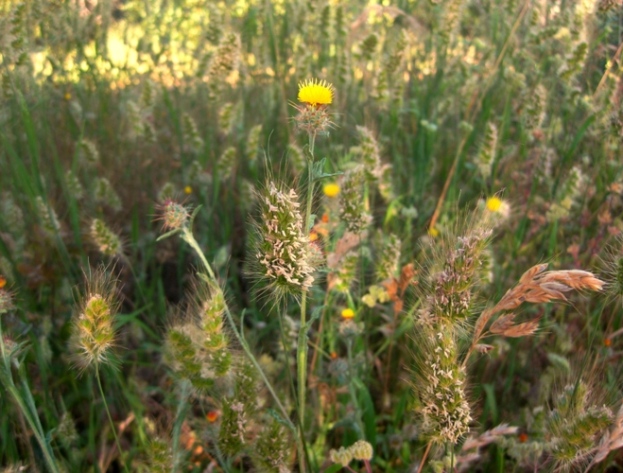
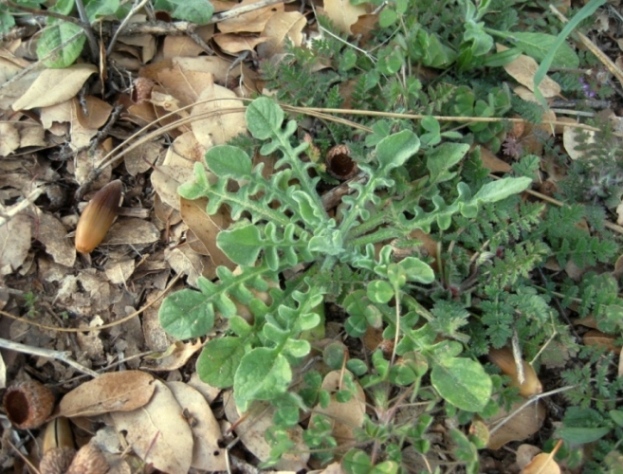
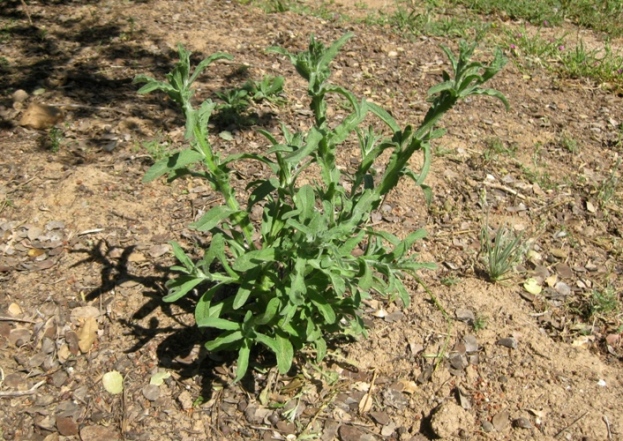
12 comments